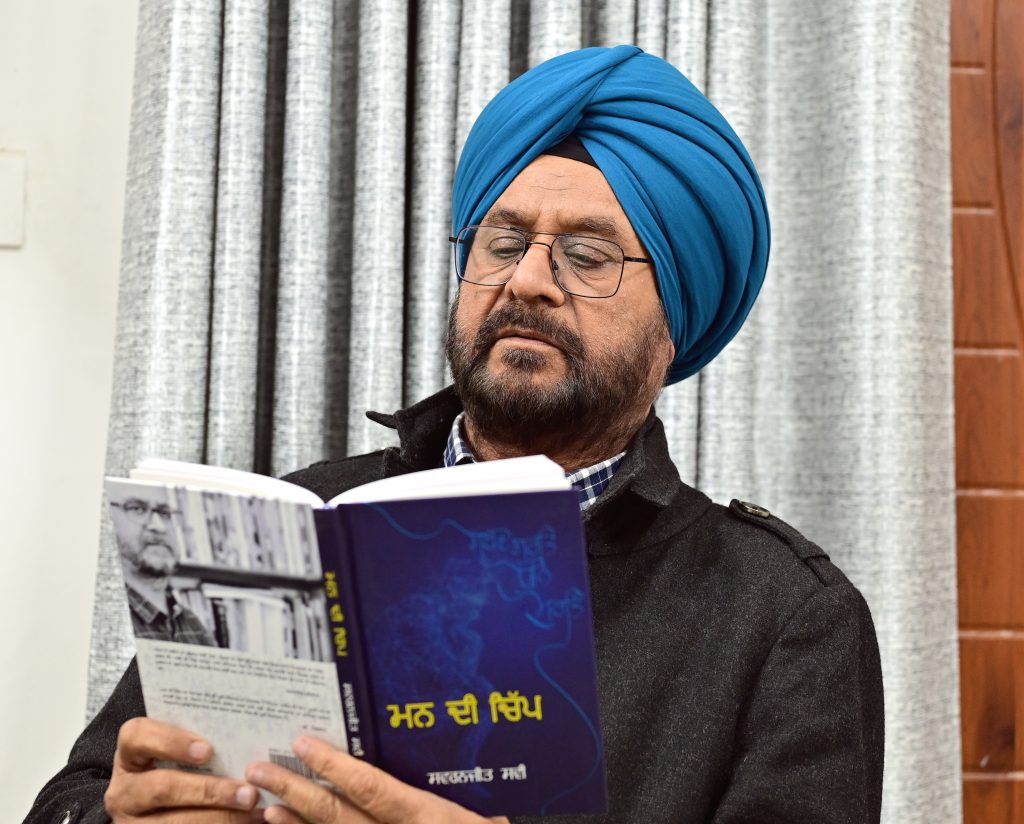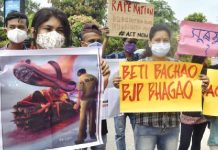Savi has been named the winner of the Sahitya Akademi Award 2023 for his collection of Punjabi poetry ‘Mann Di Chip.’ The book showcases the creative use of digital metaphors – a first in Punjabi language – to express churnings of contemporary society’s sensibilities, writes Raju William

Punjabi poet Swaranjit Savi’s journey to literary fame is set in Punjab’s industrial hub, Ludhiana, where he grew up in a hyper commercial atmosphere listening and responding to his subtle creative urges.
On December 20, 2023 his name was announced for the year’s Sahitya Akademi Award, India’s top official literary award for his collection of Punjabi poetry ‘Mann Di Chip’ (Chip of Mind). As the title suggests, the book showcases inarguably the best creative use of digital metaphors in poetry to express churnings of contemporary society’s sensibilities in a manner none has done before in the Punjabi language. Doing so, he takes on the monster called Artificial Intelligence (AI) in the realm of literature.
Amidst an intense ongoing global – man versus machine – debate, Savi’s consciousness through his sublime poetic expressions strain to liberate from the AI-induced servility. Without sounding didactic, his poetry seeks willing conformity to this notion by the nations and communities of the world in shaping the future. For the Punjabi community, this issue is all the more significant due to its transnational character. With award winning book, the credit for making the Punjabi language and community a part of this debate goes to Savi.
Post graduate in English and Fine Arts, Savi is a versatile individual in the world of Punjabi art and literature. He is a poet, painter, sculptor, photographer, designer and publisher. His 16 published books of poetry and many translations have earned critical acclaim.
Also a Sahitya Akademi awardee Punjabi novelist, poet and critic, Dr Manmohan had once commented that in Savi’s poetry, one gets a glimpse of painting, and in his painting, one witnesses poetry in action. His photography creates sculpture and from his sculpture comes photography. By creating a poetic scene through words, he complements the word-world of poetry.
Will his creative attention now be more on sustaining recognition that poetry has got for him than other art forms?
“No dilemma. For me, all forms of creative expression complement one another. Recognition of my poetry is definitely a booster for me. After finishing any art work, be it painting or sculpting, I get up with a feeling as if something is still left unexpressed. Then my mind shifts to poetry to satisfy my deep urge to express the unsaid. The same is my state of mind when I write a poem and feel short of expression,” he responds.
In 2012, he arrived with a bang on the art scene as a sculptor when his creation ‘Evolution-II’ in stainless steel signifying the evolution of tools and language was installed at Punjab Agricultural University, Ludhiana. Another masterpiece named Ekomkar Te Rabab adorns Kartarpur Sahib Corridor Chowk, Dera Baba Nanak since 2019. He has also designed plates of all the 15 Bhakts, whose poetry is included in Sri Guru Granth Sahib, at Immigration Port, Indo-Pak border at Kartarpur Sahib.
He paints in the series form in oil, natural pigments on canvas and mix media on paper. Desire, The Quest, Leela, Nee Dhartiye, Impressions and Udasian Babey Nanak Dian are collections of his paintings on permanent display in India, the UK, the US, Canada, Afghanistan, Uzbekistan and Philippines.
The acclaimed poet has been following his passion of photography since student days at Apeejay College of Fine Arts, Jalandhar. His exhibitions – Speaking Tree and Dancing Lines – have received wide appreciation.
Savi’s award winning work of poetry awaits wider appreciation. To achieve this objective, the Sahitya Akademi will get it translated in major Indian languages in due course.













